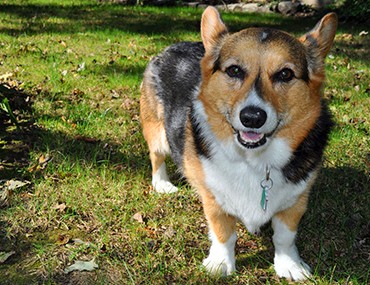Background
The Pembroke Welsh Corgi is among the oldest of the herding dogs, and also the smallest of the group. They are traditionally tailless and for a long it was requirement for showing. The breed can be traced back as far as 1107 AD when Flemish Weavers brought them along to Whales. They were used to herd sheep, horses, geese, cattle, ducks and just about anything else that moved. Their ancestry is similar to that of the Keeshond, Pomeranian, Samoyed, Chow Chow, Norwegian Elkhound and Finnish Spitz. In 1933 King George VI gave Corgis to his daughters, the breed has risen in popularity ever since, it has also remained a favorite among royalty.
Sizing Up
- Weight: 25 to 30 Pounds

- Height : 10-12 inches (feet to shoulder)
- Coat: Double, medium length hair
- Color: Black and Tan, Fawn, Red, Sable, Black & White, Blue, White
- Life Expectancy: 12-15 years
What are they like?
Pembroke Welsh Corgi’s are easily trainable, and eager to please. They love to be loved, thriving on attention. It’s best to expose them early to other people and animals, after which they should be fine when meeting new people, and sociable around children. They’re a smart breed, which is one of the reasons they were used to herd. They are ingrained with a powerful work ethic, it’s important to keep them busy. Be it games, training, or working the corgi just won’t quit, and all of it with a smile on.
They’re easy to train, perhaps too easy. Sometimes you’ll need to change the obedience training just so they won’t get bored with it. You’ll need to be stern with this breed; their intelligence gives them a strong desire to be in charge. You must take control right from the start. Training can begin early, the earlier the better. Make it clear you’re at the head of the pack.
Right breed for you?
- Location: The Pembroke would be right at home on a farm. If you have a small apartment you’ll need to make sure you go on long walks or have another way to exercise the dog.
- Herding: They have the instincts to herd. If they have nothing to herd they might go looking, be especially careful of vehicles.
- Grooming: Routine brushing, at least once per week.
- Activity level: An active breed, able to compete in competitions of agility and speed.
If you have any questions or concerns, you should always visit or call your veterinarian – they are your best resource to ensure the health and well-being of your pets.
